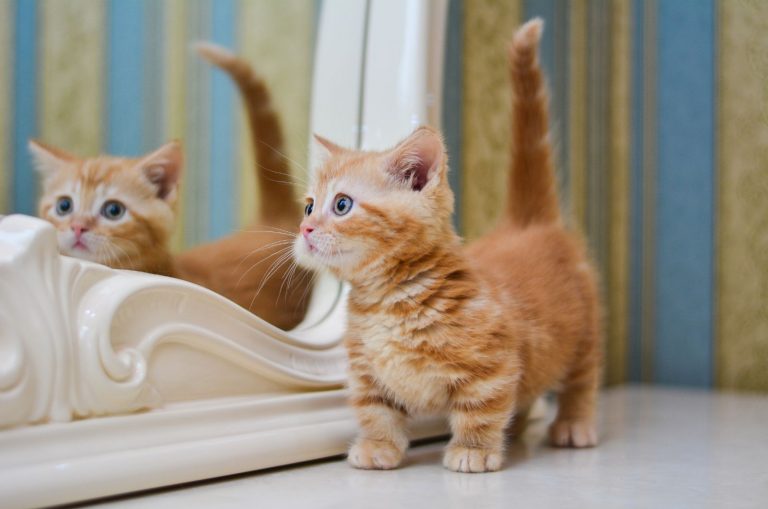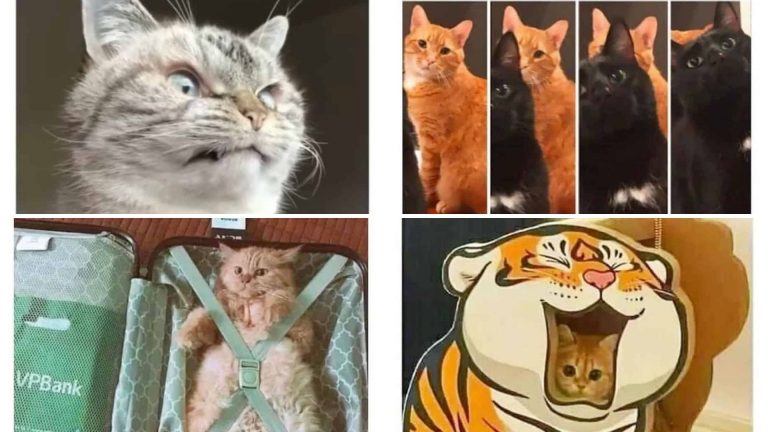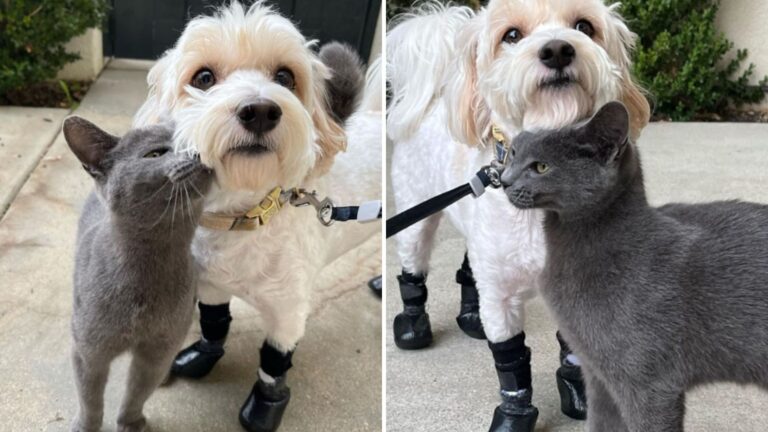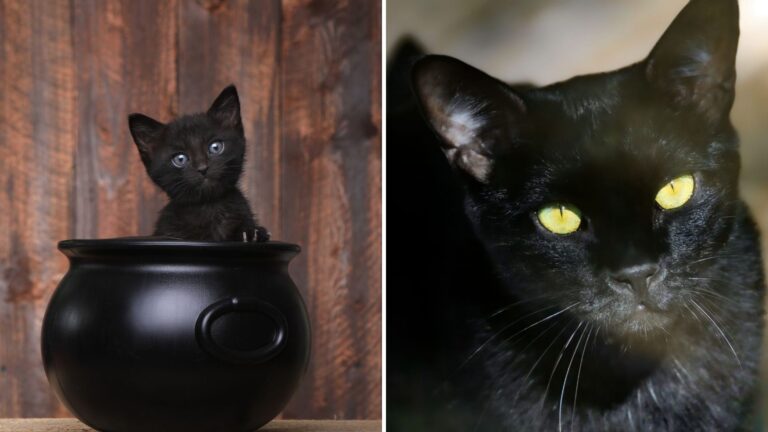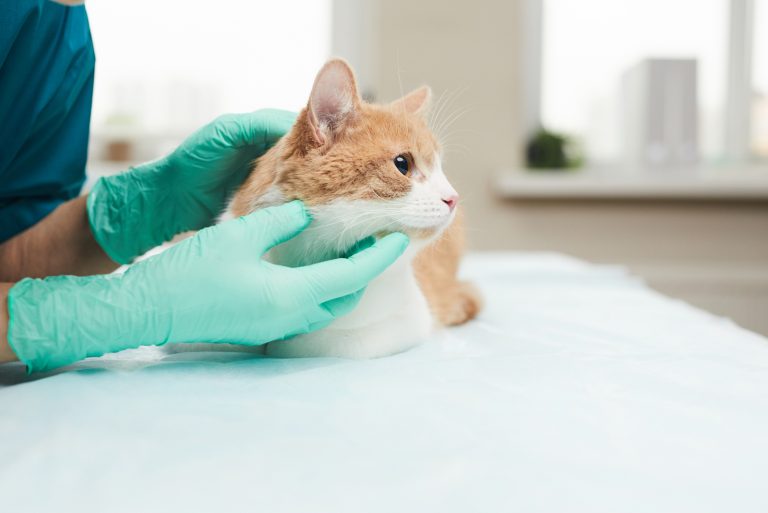Chicago Woman’s Attempt To Help Giant Bird On Road Leads To Shocking Outcome
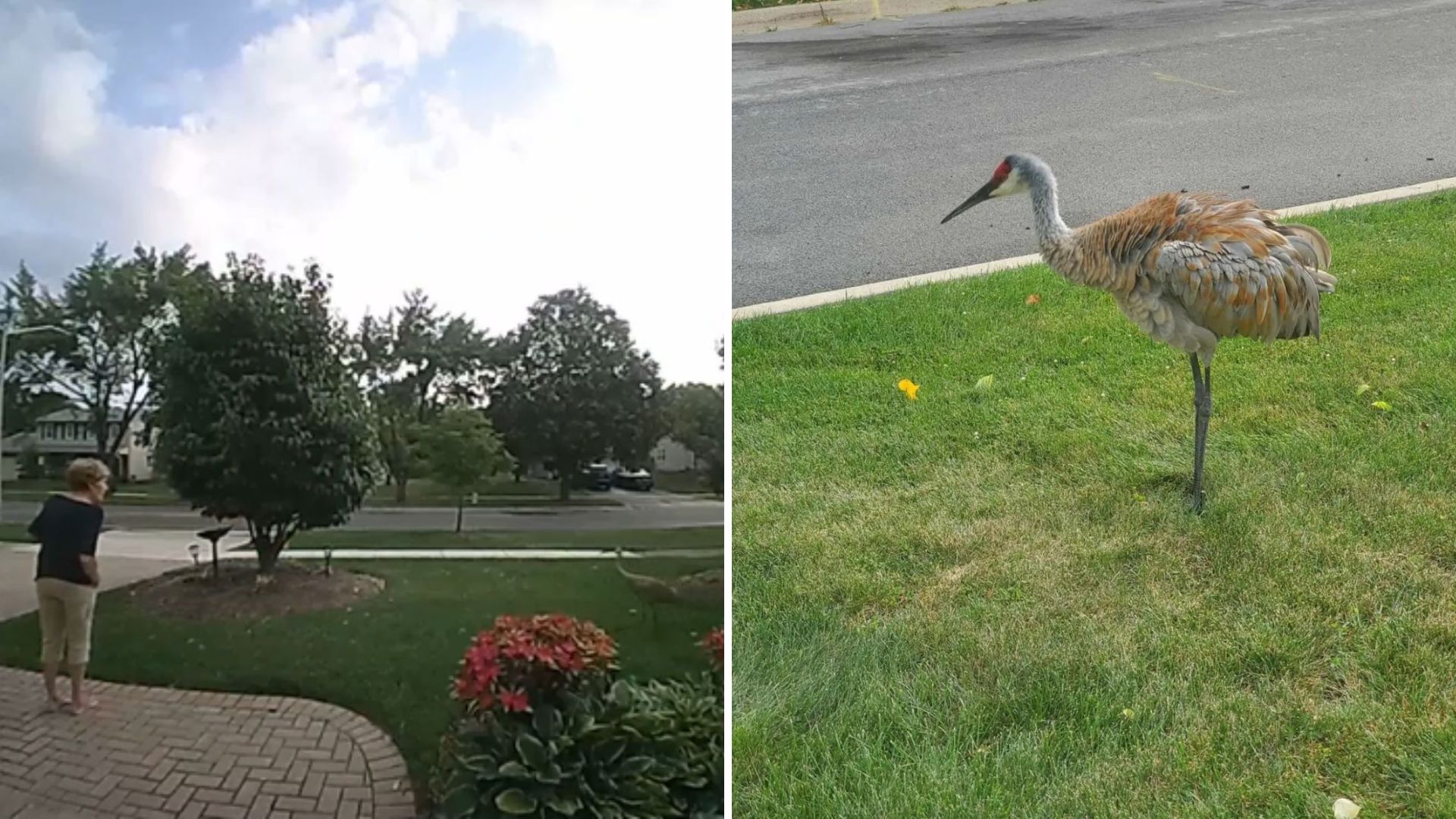
You never expect a sound that could belong in a dinosaur movie to echo through your quiet suburban street.
But for Judie Schwager, that’s exactly what happened one ordinary day in a northwest suburb of Chicago, Illinois.
Inside her home, Judie was startled by an unusual cry , loud, strange, and completely out of place. Her curiosity piqued, she rushed to the window, and what she saw made her blink twice.
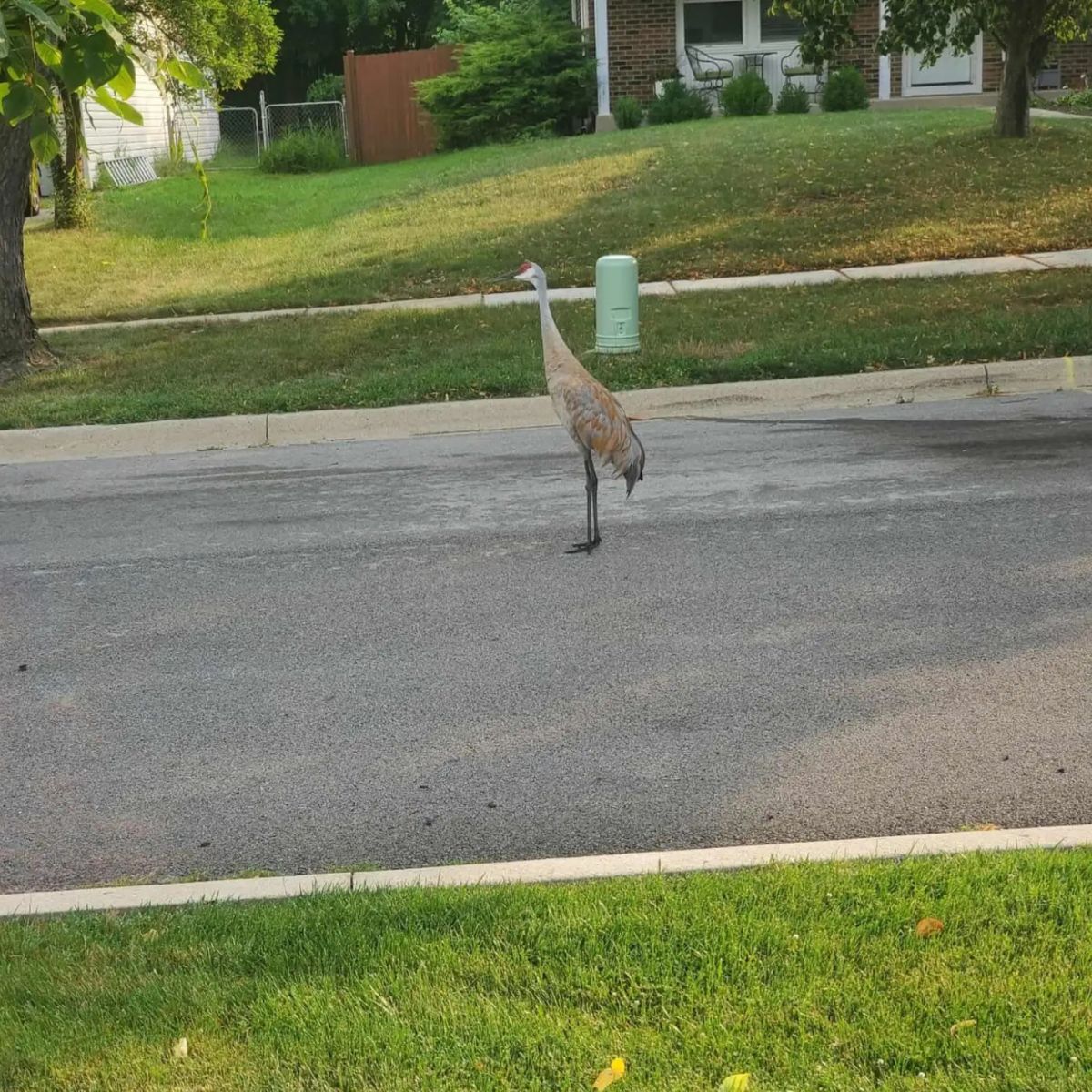
Standing in the middle of the street, completely unbothered by traffic, was a massive sandhill crane.
If you’ve ever seen one of these birds up close, you know they’re unlike any backyard visitor.
With long, spindly legs, wide wings, and a formidable beak, a sandhill crane is both majestic and intimidating. Judie’s first thought wasn’t admiration, it was concern. The bird was right in the road, and traffic could be fatal for a creature that size.
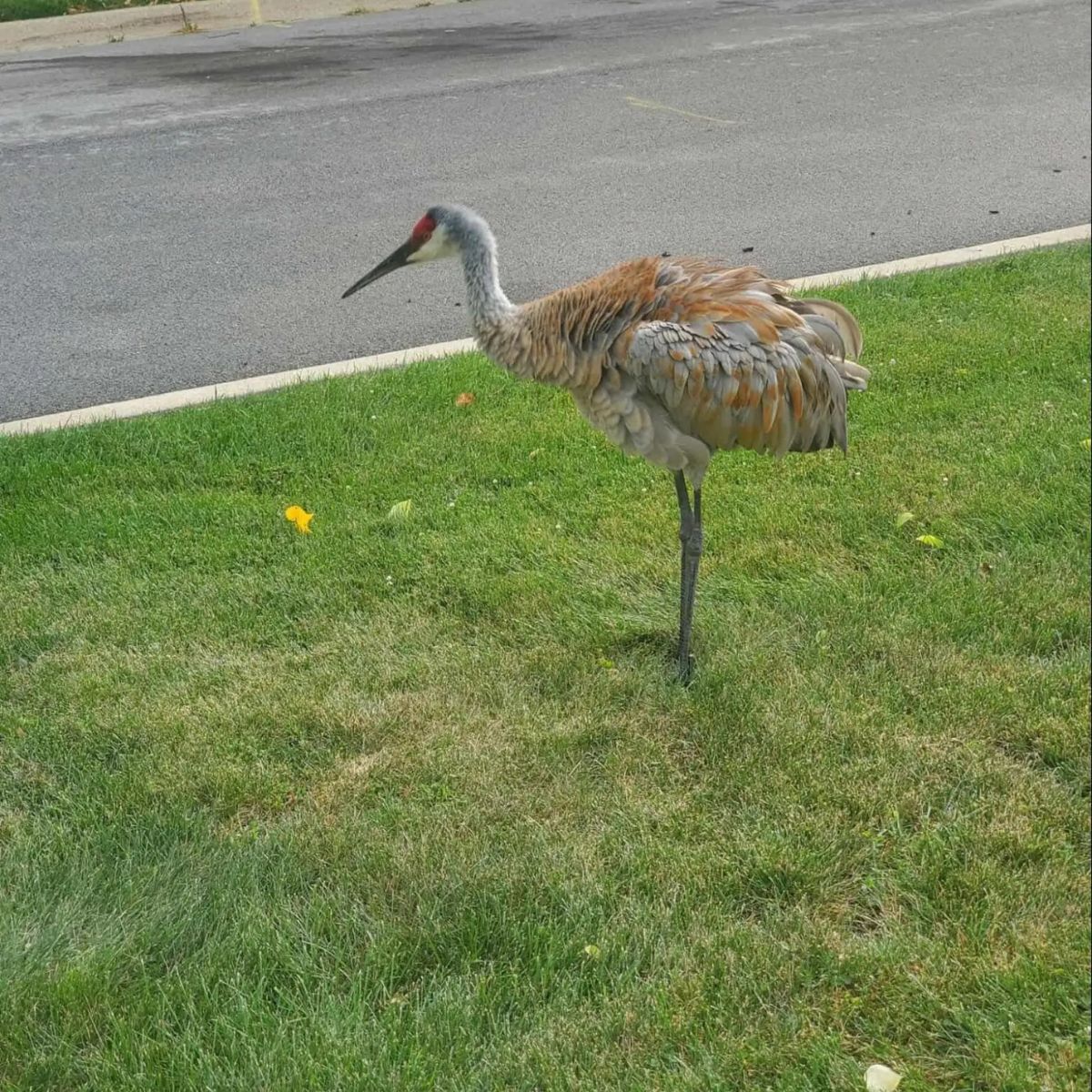
Without hesitation, she ran outside to guide the crane to safety. She recalled in an interview:
“I motioned at him and said, ‘You better get out of the street.’”
But the situation quickly became even more surreal. Instead of flying away, the crane locked eyes with Judie and started walking toward her.
Imagine facing a bird nearly as tall as you, striding confidently, like it wanted to be friends. Judie described the experience:
“He actually walked toward me. It was surreal. My brain said, ‘Nope, this isn’t really happening.’… It was quite an experience having a bird nearly as tall as me right behind me with his huge beak.”
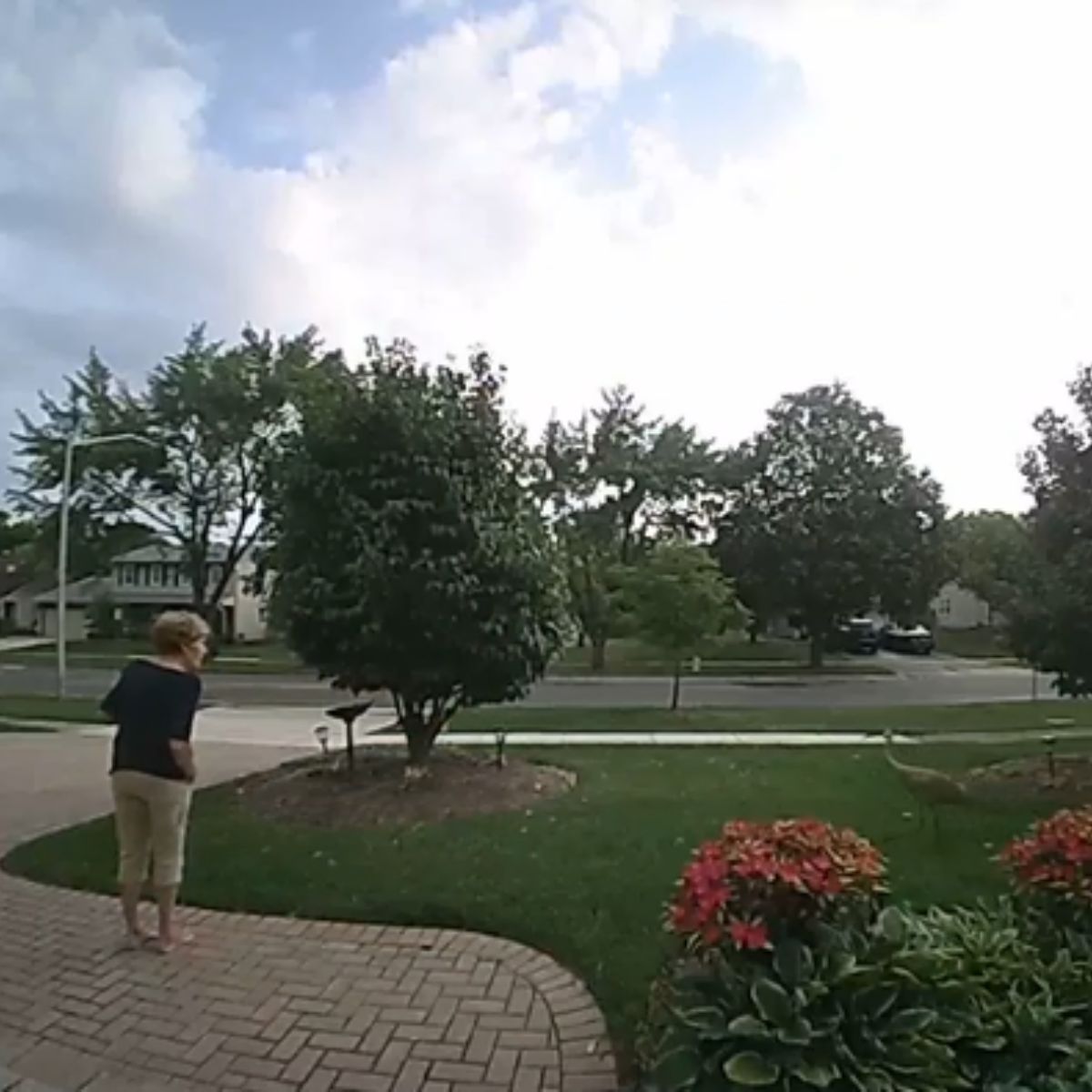
Judie found herself slowly backing up as the crane followed her through her yard and all the way to her house.
Amazingly, the entire encounter was captured on her security camera, turning an everyday moment into a once-in-a-lifetime experience.
Judie wondered if the crane had gotten separated from its flock. Sandhill cranes typically stick together, especially during fall migration when they head south in large groups.
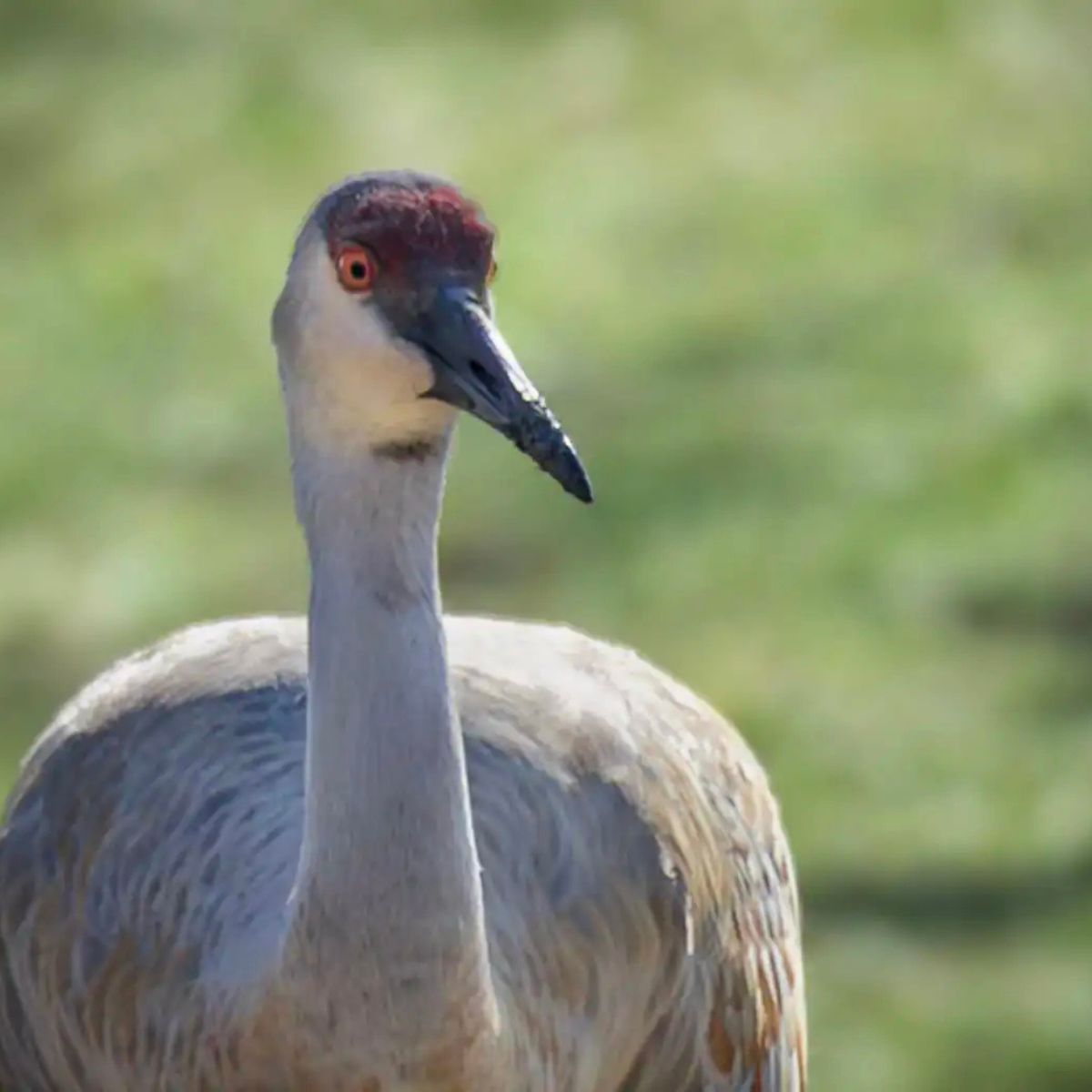
She even checked a nearby park, hoping to see other cranes, but he was alone.
While the encounter was magical, experts caution that wild animals should remain wary of humans. Janice Culver, a naturalist with the Crabtree Nature Center, explained that this particular crane had likely become accustomed to human handouts:
“That’s one of the biggest problems that we have with people and wildlife. Once there’s a food source or something for the animal to get, they’re going to keep coming back… It might delay or change a crane’s migration pattern because they’re being fed.”
Culver also noted that animals comfortable around people face real dangers:
“This also makes them more comfortable with humans, which could put them at risk of being hit by a car or harmed by a person or animal.”
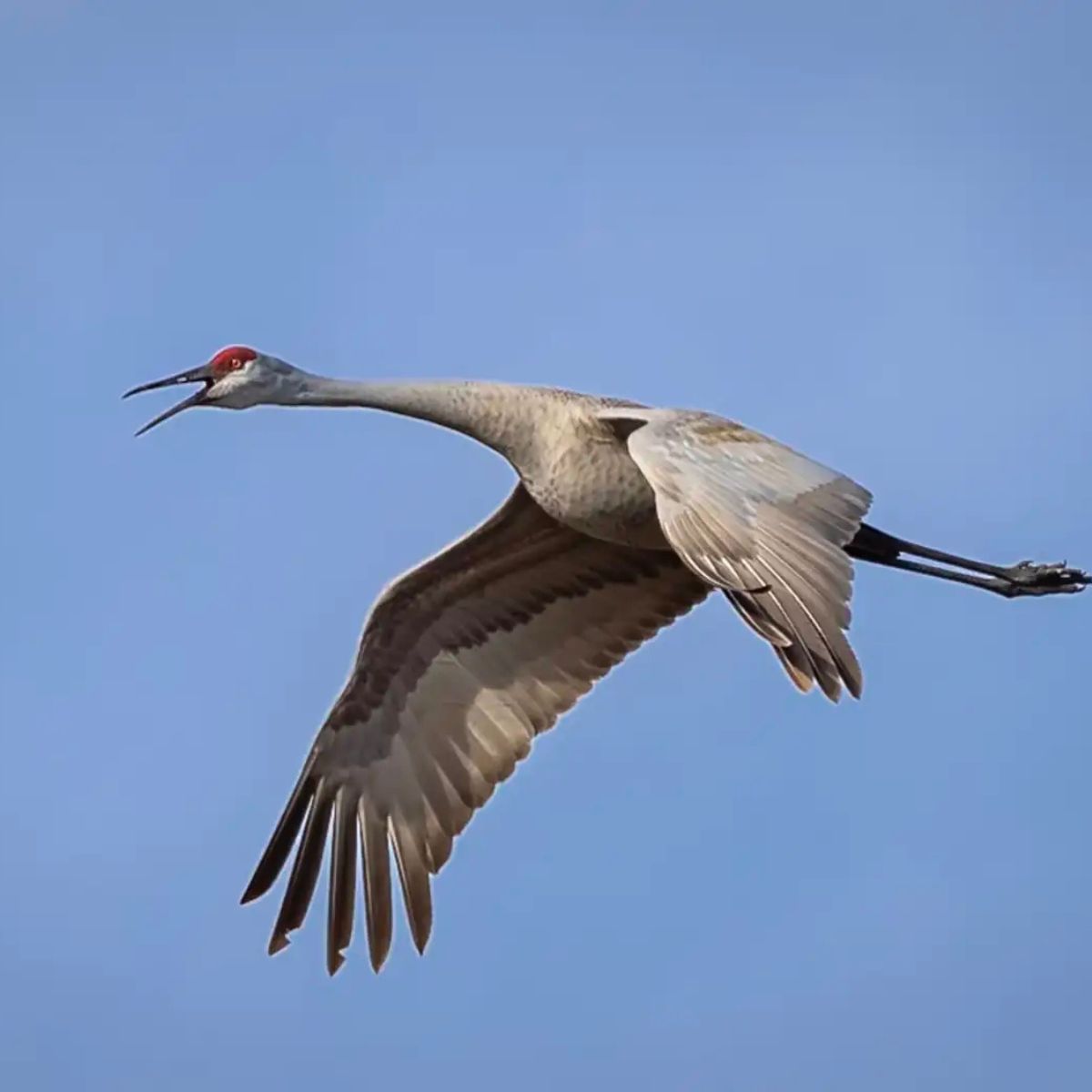
Wild creatures are safest when left in their natural environment, and humans are safest when they respect that boundary. Judie understood this. After she guided the crane out of the road, she felt her job was done. Amusingly, she joked with the bird:
“I told him I had to go to the dentist and went back in the house. I watched him, and he started eating away at the locusts and eventually flew away.”
The crane seemed content, pecking at locusts before finally taking flight into the sky. Judie walked away with an unforgettable story, a reminder of the wonders of nature and the delicate balance between humans and wildlife.
For one short while, she had a feathered companion that turned a normal day into a once-in-a-lifetime encounter, and the crane returned to doing exactly what cranes do best: fending for himself in the wild.

